-
EXECUTIVE SUMMARY
-
Market Overview
-
Key Findings
-
Market Segmentation
-
Competitive Landscape
-
Challenges and Opportunities
-
Future Outlook
-
MARKET INTRODUCTION
-
Definition
-
Scope of the study
-
Research Objective
-
Assumption
-
Limitations
-
RESEARCH METHODOLOGY
-
Overview
-
Data Mining
-
Secondary Research
-
Primary Research
-
Primary Interviews and Information Gathering Process
-
Breakdown of Primary Respondents
-
Forecasting Model
-
Market Size Estimation
-
Bottom-Up Approach
-
Top-Down Approach
-
Data Triangulation
-
Validation
-
MARKET DYNAMICS
-
Overview
-
Drivers
-
Restraints
-
Opportunities
-
MARKET FACTOR ANALYSIS
-
Value chain Analysis
-
Porter's Five Forces Analysis
-
Bargaining Power of Suppliers
-
Bargaining Power of Buyers
-
Threat of New Entrants
-
Threat of Substitutes
-
Intensity of Rivalry
-
COVID-19 Impact Analysis
-
Market Impact Analysis
-
Regional Impact
-
Opportunity and Threat Analysis
-
Augmented Reality in Healthcare Market, BY Application (USD Billion)
-
Surgical Visualization
-
Medical Training
-
Patient Care Management
-
Medical Imaging
-
Rehabilitation
-
Augmented Reality in Healthcare Market, BY Software Type (USD Billion)
-
Augmented Reality Software
-
Software Development Kits
-
Cloud-Based Platforms
-
Mobile Applications
-
Augmented Reality in Healthcare Market, BY End User (USD Billion)
-
Hospitals
-
Clinics
-
Pharmaceutical Companies
-
Medical Device Manufacturers
-
Augmented Reality in Healthcare Market, BY Technology (USD Billion)
-
Marker-Based Augmented Reality
-
Markerless Augmented Reality
-
Projection-Based Augmented Reality
-
Superimposition-Based Augmented Reality
-
Augmented Reality in Healthcare Market, BY Regional (USD Billion)
-
North America
-
US
-
Canada
-
Europe
-
Germany
-
UK
-
France
-
Russia
-
Italy
-
Spain
-
Rest of Europe
-
APAC
-
China
-
India
-
Japan
-
South Korea
-
Malaysia
-
Thailand
-
Indonesia
-
Rest of APAC
-
South America
-
Brazil
-
Mexico
-
Argentina
-
Rest of South America
-
MEA
-
GCC Countries
-
South Africa
-
Rest of MEA
-
Competitive Landscape
-
Overview
-
Competitive Analysis
-
Market share Analysis
-
Major Growth Strategy in the Augmented Reality in Healthcare Market
-
Competitive Benchmarking
-
Leading Players in Terms of Number of Developments in the Augmented Reality in Healthcare Market
-
Key developments and growth strategies
-
New Product Launch/Service Deployment
-
Merger & Acquisitions
-
Joint Ventures
-
Major Players Financial Matrix
-
Sales and Operating Income
-
Major Players R&D Expenditure. 2023
-
Company Profiles
-
Augmedix
-
Financial Overview
-
Products Offered
-
Key Developments
-
SWOT Analysis
-
Key Strategies
-
Proprio
-
Financial Overview
-
Products Offered
-
Key Developments
-
SWOT Analysis
-
Key Strategies
-
Varjo
-
Financial Overview
-
Products Offered
-
Key Developments
-
SWOT Analysis
-
Key Strategies
-
Surgical Theater
-
Financial Overview
-
Products Offered
-
Key Developments
-
SWOT Analysis
-
Key Strategies
-
PTC
-
Financial Overview
-
Products Offered
-
Key Developments
-
SWOT Analysis
-
Key Strategies
-
Google
-
Financial Overview
-
Products Offered
-
Key Developments
-
SWOT Analysis
-
Key Strategies
-
Apple
-
Financial Overview
-
Products Offered
-
Key Developments
-
SWOT Analysis
-
Key Strategies
-
Niantic
-
Financial Overview
-
Products Offered
-
Key Developments
-
SWOT Analysis
-
Key Strategies
-
Intel
-
Financial Overview
-
Products Offered
-
Key Developments
-
SWOT Analysis
-
Key Strategies
-
Magic Leap
-
Financial Overview
-
Products Offered
-
Key Developments
-
SWOT Analysis
-
Key Strategies
-
Microsoft
-
Financial Overview
-
Products Offered
-
Key Developments
-
SWOT Analysis
-
Key Strategies
-
Osso VR
-
Financial Overview
-
Products Offered
-
Key Developments
-
SWOT Analysis
-
Key Strategies
-
ImmersiveTouch
-
Financial Overview
-
Products Offered
-
Key Developments
-
SWOT Analysis
-
Key Strategies
-
Viveport
-
Financial Overview
-
Products Offered
-
Key Developments
-
SWOT Analysis
-
Key Strategies
-
Auris Health
-
Financial Overview
-
Products Offered
-
Key Developments
-
SWOT Analysis
-
Key Strategies
-
Appendix
-
References
-
Related Reports
-
LIST Of tables
-
LIST OF ASSUMPTIONS
-
North America Augmented Reality in Healthcare Market SIZE ESTIMATES & FORECAST, BY APPLICATION, 2019-2035 (USD Billions)
-
North America Augmented Reality in Healthcare Market SIZE ESTIMATES & FORECAST, BY SOFTWARE TYPE, 2019-2035 (USD Billions)
-
North America Augmented Reality in Healthcare Market SIZE ESTIMATES & FORECAST, BY END USER, 2019-2035 (USD Billions)
-
North America Augmented Reality in Healthcare Market SIZE ESTIMATES & FORECAST, BY TECHNOLOGY, 2019-2035 (USD Billions)
-
North America Augmented Reality in Healthcare Market SIZE ESTIMATES & FORECAST, BY REGIONAL, 2019-2035 (USD Billions)
-
US Augmented Reality in Healthcare Market SIZE ESTIMATES & FORECAST, BY APPLICATION, 2019-2035 (USD Billions)
-
US Augmented Reality in Healthcare Market SIZE ESTIMATES & FORECAST, BY SOFTWARE TYPE, 2019-2035 (USD Billions)
-
US Augmented Reality in Healthcare Market SIZE ESTIMATES & FORECAST, BY END USER, 2019-2035 (USD Billions)
-
US Augmented Reality in Healthcare Market SIZE ESTIMATES & FORECAST, BY TECHNOLOGY, 2019-2035 (USD Billions)
-
US Augmented Reality in Healthcare Market SIZE ESTIMATES & FORECAST, BY REGIONAL, 2019-2035 (USD Billions)
-
Canada Augmented Reality in Healthcare Market SIZE ESTIMATES & FORECAST, BY APPLICATION, 2019-2035 (USD Billions)
-
Canada Augmented Reality in Healthcare Market SIZE ESTIMATES & FORECAST, BY SOFTWARE TYPE, 2019-2035 (USD Billions)
-
Canada Augmented Reality in Healthcare Market SIZE ESTIMATES & FORECAST, BY END USER, 2019-2035 (USD Billions)
-
Canada Augmented Reality in Healthcare Market SIZE ESTIMATES & FORECAST, BY TECHNOLOGY, 2019-2035 (USD Billions)
-
Canada Augmented Reality in Healthcare Market SIZE ESTIMATES & FORECAST, BY REGIONAL, 2019-2035 (USD Billions)
-
Europe Augmented Reality in Healthcare Market SIZE ESTIMATES & FORECAST, BY APPLICATION, 2019-2035 (USD Billions)
-
Europe Augmented Reality in Healthcare Market SIZE ESTIMATES & FORECAST, BY SOFTWARE TYPE, 2019-2035 (USD Billions)
-
Europe Augmented Reality in Healthcare Market SIZE ESTIMATES & FORECAST, BY END USER, 2019-2035 (USD Billions)
-
Europe Augmented Reality in Healthcare Market SIZE ESTIMATES & FORECAST, BY TECHNOLOGY, 2019-2035 (USD Billions)
-
Europe Augmented Reality in Healthcare Market SIZE ESTIMATES & FORECAST, BY REGIONAL, 2019-2035 (USD Billions)
-
Germany Augmented Reality in Healthcare Market SIZE ESTIMATES & FORECAST, BY APPLICATION, 2019-2035 (USD Billions)
-
Germany Augmented Reality in Healthcare Market SIZE ESTIMATES & FORECAST, BY SOFTWARE TYPE, 2019-2035 (USD Billions)
-
Germany Augmented Reality in Healthcare Market SIZE ESTIMATES & FORECAST, BY END USER, 2019-2035 (USD Billions)
-
Germany Augmented Reality in Healthcare Market SIZE ESTIMATES & FORECAST, BY TECHNOLOGY, 2019-2035 (USD Billions)
-
Germany Augmented Reality in Healthcare Market SIZE ESTIMATES & FORECAST, BY REGIONAL, 2019-2035 (USD Billions)
-
UK Augmented Reality in Healthcare Market SIZE ESTIMATES & FORECAST, BY APPLICATION, 2019-2035 (USD Billions)
-
UK Augmented Reality in Healthcare Market SIZE ESTIMATES & FORECAST, BY SOFTWARE TYPE, 2019-2035 (USD Billions)
-
UK Augmented Reality in Healthcare Market SIZE ESTIMATES & FORECAST, BY END USER, 2019-2035 (USD Billions)
-
UK Augmented Reality in Healthcare Market SIZE ESTIMATES & FORECAST, BY TECHNOLOGY, 2019-2035 (USD Billions)
-
UK Augmented Reality in Healthcare Market SIZE ESTIMATES & FORECAST, BY REGIONAL, 2019-2035 (USD Billions)
-
France Augmented Reality in Healthcare Market SIZE ESTIMATES & FORECAST, BY APPLICATION, 2019-2035 (USD Billions)
-
France Augmented Reality in Healthcare Market SIZE ESTIMATES & FORECAST, BY SOFTWARE TYPE, 2019-2035 (USD Billions)
-
France Augmented Reality in Healthcare Market SIZE ESTIMATES & FORECAST, BY END USER, 2019-2035 (USD Billions)
-
France Augmented Reality in Healthcare Market SIZE ESTIMATES & FORECAST, BY TECHNOLOGY, 2019-2035 (USD Billions)
-
France Augmented Reality in Healthcare Market SIZE ESTIMATES & FORECAST, BY REGIONAL, 2019-2035 (USD Billions)
-
Russia Augmented Reality in Healthcare Market SIZE ESTIMATES & FORECAST, BY APPLICATION, 2019-2035 (USD Billions)
-
Russia Augmented Reality in Healthcare Market SIZE ESTIMATES & FORECAST, BY SOFTWARE TYPE, 2019-2035 (USD Billions)
-
Russia Augmented Reality in Healthcare Market SIZE ESTIMATES & FORECAST, BY END USER, 2019-2035 (USD Billions)
-
Russia Augmented Reality in Healthcare Market SIZE ESTIMATES & FORECAST, BY TECHNOLOGY, 2019-2035 (USD Billions)
-
Russia Augmented Reality in Healthcare Market SIZE ESTIMATES & FORECAST, BY REGIONAL, 2019-2035 (USD Billions)
-
Italy Augmented Reality in Healthcare Market SIZE ESTIMATES & FORECAST, BY APPLICATION, 2019-2035 (USD Billions)
-
Italy Augmented Reality in Healthcare Market SIZE ESTIMATES & FORECAST, BY SOFTWARE TYPE, 2019-2035 (USD Billions)
-
Italy Augmented Reality in Healthcare Market SIZE ESTIMATES & FORECAST, BY END USER, 2019-2035 (USD Billions)
-
Italy Augmented Reality in Healthcare Market SIZE ESTIMATES & FORECAST, BY TECHNOLOGY, 2019-2035 (USD Billions)
-
Italy Augmented Reality in Healthcare Market SIZE ESTIMATES & FORECAST, BY REGIONAL, 2019-2035 (USD Billions)
-
Spain Augmented Reality in Healthcare Market SIZE ESTIMATES & FORECAST, BY APPLICATION, 2019-2035 (USD Billions)
-
Spain Augmented Reality in Healthcare Market SIZE ESTIMATES & FORECAST, BY SOFTWARE TYPE, 2019-2035 (USD Billions)
-
Spain Augmented Reality in Healthcare Market SIZE ESTIMATES & FORECAST, BY END USER, 2019-2035 (USD Billions)
-
Spain Augmented Reality in Healthcare Market SIZE ESTIMATES & FORECAST, BY TECHNOLOGY, 2019-2035 (USD Billions)
-
Spain Augmented Reality in Healthcare Market SIZE ESTIMATES & FORECAST, BY REGIONAL, 2019-2035 (USD Billions)
-
Rest of Europe Augmented Reality in Healthcare Market SIZE ESTIMATES & FORECAST, BY APPLICATION, 2019-2035 (USD Billions)
-
Rest of Europe Augmented Reality in Healthcare Market SIZE ESTIMATES & FORECAST, BY SOFTWARE TYPE, 2019-2035 (USD Billions)
-
Rest of Europe Augmented Reality in Healthcare Market SIZE ESTIMATES & FORECAST, BY END USER, 2019-2035 (USD Billions)
-
Rest of Europe Augmented Reality in Healthcare Market SIZE ESTIMATES & FORECAST, BY TECHNOLOGY, 2019-2035 (USD Billions)
-
Rest of Europe Augmented Reality in Healthcare Market SIZE ESTIMATES & FORECAST, BY REGIONAL, 2019-2035 (USD Billions)
-
APAC Augmented Reality in Healthcare Market SIZE ESTIMATES & FORECAST, BY APPLICATION, 2019-2035 (USD Billions)
-
APAC Augmented Reality in Healthcare Market SIZE ESTIMATES & FORECAST, BY SOFTWARE TYPE, 2019-2035 (USD Billions)
-
APAC Augmented Reality in Healthcare Market SIZE ESTIMATES & FORECAST, BY END USER, 2019-2035 (USD Billions)
-
APAC Augmented Reality in Healthcare Market SIZE ESTIMATES & FORECAST, BY TECHNOLOGY, 2019-2035 (USD Billions)
-
APAC Augmented Reality in Healthcare Market SIZE ESTIMATES & FORECAST, BY REGIONAL, 2019-2035 (USD Billions)
-
China Augmented Reality in Healthcare Market SIZE ESTIMATES & FORECAST, BY APPLICATION, 2019-2035 (USD Billions)
-
China Augmented Reality in Healthcare Market SIZE ESTIMATES & FORECAST, BY SOFTWARE TYPE, 2019-2035 (USD Billions)
-
China Augmented Reality in Healthcare Market SIZE ESTIMATES & FORECAST, BY END USER, 2019-2035 (USD Billions)
-
China Augmented Reality in Healthcare Market SIZE ESTIMATES & FORECAST, BY TECHNOLOGY, 2019-2035 (USD Billions)
-
China Augmented Reality in Healthcare Market SIZE ESTIMATES & FORECAST, BY REGIONAL, 2019-2035 (USD Billions)
-
India Augmented Reality in Healthcare Market SIZE ESTIMATES & FORECAST, BY APPLICATION, 2019-2035 (USD Billions)
-
India Augmented Reality in Healthcare Market SIZE ESTIMATES & FORECAST, BY SOFTWARE TYPE, 2019-2035 (USD Billions)
-
India Augmented Reality in Healthcare Market SIZE ESTIMATES & FORECAST, BY END USER, 2019-2035 (USD Billions)
-
India Augmented Reality in Healthcare Market SIZE ESTIMATES & FORECAST, BY TECHNOLOGY, 2019-2035 (USD Billions)
-
India Augmented Reality in Healthcare Market SIZE ESTIMATES & FORECAST, BY REGIONAL, 2019-2035 (USD Billions)
-
Japan Augmented Reality in Healthcare Market SIZE ESTIMATES & FORECAST, BY APPLICATION, 2019-2035 (USD Billions)
-
Japan Augmented Reality in Healthcare Market SIZE ESTIMATES & FORECAST, BY SOFTWARE TYPE, 2019-2035 (USD Billions)
-
Japan Augmented Reality in Healthcare Market SIZE ESTIMATES & FORECAST, BY END USER, 2019-2035 (USD Billions)
-
Japan Augmented Reality in Healthcare Market SIZE ESTIMATES & FORECAST, BY TECHNOLOGY, 2019-2035 (USD Billions)
-
Japan Augmented Reality in Healthcare Market SIZE ESTIMATES & FORECAST, BY REGIONAL, 2019-2035 (USD Billions)
-
South Korea Augmented Reality in Healthcare Market SIZE ESTIMATES & FORECAST, BY APPLICATION, 2019-2035 (USD Billions)
-
South Korea Augmented Reality in Healthcare Market SIZE ESTIMATES & FORECAST, BY SOFTWARE TYPE, 2019-2035 (USD Billions)
-
South Korea Augmented Reality in Healthcare Market SIZE ESTIMATES & FORECAST, BY END USER, 2019-2035 (USD Billions)
-
South Korea Augmented Reality in Healthcare Market SIZE ESTIMATES & FORECAST, BY TECHNOLOGY, 2019-2035 (USD Billions)
-
South Korea Augmented Reality in Healthcare Market SIZE ESTIMATES & FORECAST, BY REGIONAL, 2019-2035 (USD Billions)
-
Malaysia Augmented Reality in Healthcare Market SIZE ESTIMATES & FORECAST, BY APPLICATION, 2019-2035 (USD Billions)
-
Malaysia Augmented Reality in Healthcare Market SIZE ESTIMATES & FORECAST, BY SOFTWARE TYPE, 2019-2035 (USD Billions)
-
Malaysia Augmented Reality in Healthcare Market SIZE ESTIMATES & FORECAST, BY END USER, 2019-2035 (USD Billions)
-
Malaysia Augmented Reality in Healthcare Market SIZE ESTIMATES & FORECAST, BY TECHNOLOGY, 2019-2035 (USD Billions)
-
Malaysia Augmented Reality in Healthcare Market SIZE ESTIMATES & FORECAST, BY REGIONAL, 2019-2035 (USD Billions)
-
Thailand Augmented Reality in Healthcare Market SIZE ESTIMATES & FORECAST, BY APPLICATION, 2019-2035 (USD Billions)
-
Thailand Augmented Reality in Healthcare Market SIZE ESTIMATES & FORECAST, BY SOFTWARE TYPE, 2019-2035 (USD Billions)
-
Thailand Augmented Reality in Healthcare Market SIZE ESTIMATES & FORECAST, BY END USER, 2019-2035 (USD Billions)
-
Thailand Augmented Reality in Healthcare Market SIZE ESTIMATES & FORECAST, BY TECHNOLOGY, 2019-2035 (USD Billions)
-
Thailand Augmented Reality in Healthcare Market SIZE ESTIMATES & FORECAST, BY REGIONAL, 2019-2035 (USD Billions)
-
Indonesia Augmented Reality in Healthcare Market SIZE ESTIMATES & FORECAST, BY APPLICATION, 2019-2035 (USD Billions)
-
Indonesia Augmented Reality in Healthcare Market SIZE ESTIMATES & FORECAST, BY SOFTWARE TYPE, 2019-2035 (USD Billions)
-
Indonesia Augmented Reality in Healthcare Market SIZE ESTIMATES & FORECAST, BY END USER, 2019-2035 (USD Billions)
-
Indonesia Augmented Reality in Healthcare Market SIZE ESTIMATES & FORECAST, BY TECHNOLOGY, 2019-2035 (USD Billions)
-
Indonesia Augmented Reality in Healthcare Market SIZE ESTIMATES & FORECAST, BY REGIONAL, 2019-2035 (USD Billions)
-
Rest of APAC Augmented Reality in Healthcare Market SIZE ESTIMATES & FORECAST, BY APPLICATION, 2019-2035 (USD Billions)
-
Rest of APAC Augmented Reality in Healthcare Market SIZE ESTIMATES & FORECAST, BY SOFTWARE TYPE, 2019-2035 (USD Billions)
-
Rest of APAC Augmented Reality in Healthcare Market SIZE ESTIMATES & FORECAST, BY END USER, 2019-2035 (USD Billions)
-
Rest of APAC Augmented Reality in Healthcare Market SIZE ESTIMATES & FORECAST, BY TECHNOLOGY, 2019-2035 (USD Billions)
-
Rest of APAC Augmented Reality in Healthcare Market SIZE ESTIMATES & FORECAST, BY REGIONAL, 2019-2035 (USD Billions)
-
South America Augmented Reality in Healthcare Market SIZE ESTIMATES & FORECAST, BY APPLICATION, 2019-2035 (USD Billions)
-
South America Augmented Reality in Healthcare Market SIZE ESTIMATES & FORECAST, BY SOFTWARE TYPE, 2019-2035 (USD Billions)
-
South America Augmented Reality in Healthcare Market SIZE ESTIMATES & FORECAST, BY END USER, 2019-2035 (USD Billions)
-
South America Augmented Reality in Healthcare Market SIZE ESTIMATES & FORECAST, BY TECHNOLOGY, 2019-2035 (USD Billions)
-
South America Augmented Reality in Healthcare Market SIZE ESTIMATES & FORECAST, BY REGIONAL, 2019-2035 (USD Billions)
-
Brazil Augmented Reality in Healthcare Market SIZE ESTIMATES & FORECAST, BY APPLICATION, 2019-2035 (USD Billions)
-
Brazil Augmented Reality in Healthcare Market SIZE ESTIMATES & FORECAST, BY SOFTWARE TYPE, 2019-2035 (USD Billions)
-
Brazil Augmented Reality in Healthcare Market SIZE ESTIMATES & FORECAST, BY END USER, 2019-2035 (USD Billions)
-
Brazil Augmented Reality in Healthcare Market SIZE ESTIMATES & FORECAST, BY TECHNOLOGY, 2019-2035 (USD Billions)
-
Brazil Augmented Reality in Healthcare Market SIZE ESTIMATES & FORECAST, BY REGIONAL, 2019-2035 (USD Billions)
-
Mexico Augmented Reality in Healthcare Market SIZE ESTIMATES & FORECAST, BY APPLICATION, 2019-2035 (USD Billions)
-
Mexico Augmented Reality in Healthcare Market SIZE ESTIMATES & FORECAST, BY SOFTWARE TYPE, 2019-2035 (USD Billions)
-
Mexico Augmented Reality in Healthcare Market SIZE ESTIMATES & FORECAST, BY END USER, 2019-2035 (USD Billions)
-
Mexico Augmented Reality in Healthcare Market SIZE ESTIMATES & FORECAST, BY TECHNOLOGY, 2019-2035 (USD Billions)
-
Mexico Augmented Reality in Healthcare Market SIZE ESTIMATES & FORECAST, BY REGIONAL, 2019-2035 (USD Billions)
-
Argentina Augmented Reality in Healthcare Market SIZE ESTIMATES & FORECAST, BY APPLICATION, 2019-2035 (USD Billions)
-
Argentina Augmented Reality in Healthcare Market SIZE ESTIMATES & FORECAST, BY SOFTWARE TYPE, 2019-2035 (USD Billions)
-
Argentina Augmented Reality in Healthcare Market SIZE ESTIMATES & FORECAST, BY END USER, 2019-2035 (USD Billions)
-
Argentina Augmented Reality in Healthcare Market SIZE ESTIMATES & FORECAST, BY TECHNOLOGY, 2019-2035 (USD Billions)
-
Argentina Augmented Reality in Healthcare Market SIZE ESTIMATES & FORECAST, BY REGIONAL, 2019-2035 (USD Billions)
-
Rest of South America Augmented Reality in Healthcare Market SIZE ESTIMATES & FORECAST, BY APPLICATION, 2019-2035 (USD Billions)
-
Rest of South America Augmented Reality in Healthcare Market SIZE ESTIMATES & FORECAST, BY SOFTWARE TYPE, 2019-2035 (USD Billions)
-
Rest of South America Augmented Reality in Healthcare Market SIZE ESTIMATES & FORECAST, BY END USER, 2019-2035 (USD Billions)
-
Rest of South America Augmented Reality in Healthcare Market SIZE ESTIMATES & FORECAST, BY TECHNOLOGY, 2019-2035 (USD Billions)
-
Rest of South America Augmented Reality in Healthcare Market SIZE ESTIMATES & FORECAST, BY REGIONAL, 2019-2035 (USD Billions)
-
MEA Augmented Reality in Healthcare Market SIZE ESTIMATES & FORECAST, BY APPLICATION, 2019-2035 (USD Billions)
-
MEA Augmented Reality in Healthcare Market SIZE ESTIMATES & FORECAST, BY SOFTWARE TYPE, 2019-2035 (USD Billions)
-
MEA Augmented Reality in Healthcare Market SIZE ESTIMATES & FORECAST, BY END USER, 2019-2035 (USD Billions)
-
MEA Augmented Reality in Healthcare Market SIZE ESTIMATES & FORECAST, BY TECHNOLOGY, 2019-2035 (USD Billions)
-
MEA Augmented Reality in Healthcare Market SIZE ESTIMATES & FORECAST, BY REGIONAL, 2019-2035 (USD Billions)
-
GCC Countries Augmented Reality in Healthcare Market SIZE ESTIMATES & FORECAST, BY APPLICATION, 2019-2035 (USD Billions)
-
GCC Countries Augmented Reality in Healthcare Market SIZE ESTIMATES & FORECAST, BY SOFTWARE TYPE, 2019-2035 (USD Billions)
-
GCC Countries Augmented Reality in Healthcare Market SIZE ESTIMATES & FORECAST, BY END USER, 2019-2035 (USD Billions)
-
GCC Countries Augmented Reality in Healthcare Market SIZE ESTIMATES & FORECAST, BY TECHNOLOGY, 2019-2035 (USD Billions)
-
GCC Countries Augmented Reality in Healthcare Market SIZE ESTIMATES & FORECAST, BY REGIONAL, 2019-2035 (USD Billions)
-
South Africa Augmented Reality in Healthcare Market SIZE ESTIMATES & FORECAST, BY APPLICATION, 2019-2035 (USD Billions)
-
South Africa Augmented Reality in Healthcare Market SIZE ESTIMATES & FORECAST, BY SOFTWARE TYPE, 2019-2035 (USD Billions)
-
South Africa Augmented Reality in Healthcare Market SIZE ESTIMATES & FORECAST, BY END USER, 2019-2035 (USD Billions)
-
South Africa Augmented Reality in Healthcare Market SIZE ESTIMATES & FORECAST, BY TECHNOLOGY, 2019-2035 (USD Billions)
-
South Africa Augmented Reality in Healthcare Market SIZE ESTIMATES & FORECAST, BY REGIONAL, 2019-2035 (USD Billions)
-
Rest of MEA Augmented Reality in Healthcare Market SIZE ESTIMATES & FORECAST, BY APPLICATION, 2019-2035 (USD Billions)
-
Rest of MEA Augmented Reality in Healthcare Market SIZE ESTIMATES & FORECAST, BY SOFTWARE TYPE, 2019-2035 (USD Billions)
-
Rest of MEA Augmented Reality in Healthcare Market SIZE ESTIMATES & FORECAST, BY END USER, 2019-2035 (USD Billions)
-
Rest of MEA Augmented Reality in Healthcare Market SIZE ESTIMATES & FORECAST, BY TECHNOLOGY, 2019-2035 (USD Billions)
-
Rest of MEA Augmented Reality in Healthcare Market SIZE ESTIMATES & FORECAST, BY REGIONAL, 2019-2035 (USD Billions)
-
PRODUCT LAUNCH/PRODUCT DEVELOPMENT/APPROVAL
-
ACQUISITION/PARTNERSHIP
-
LIST Of figures
-
MARKET SYNOPSIS
-
NORTH AMERICA AUGMENTED REALITY IN HEALTHCARE MARKET ANALYSIS
-
US AUGMENTED REALITY IN HEALTHCARE MARKET ANALYSIS BY APPLICATION
-
US AUGMENTED REALITY IN HEALTHCARE MARKET ANALYSIS BY SOFTWARE TYPE
-
US AUGMENTED REALITY IN HEALTHCARE MARKET ANALYSIS BY END USER
-
US AUGMENTED REALITY IN HEALTHCARE MARKET ANALYSIS BY TECHNOLOGY
-
US AUGMENTED REALITY IN HEALTHCARE MARKET ANALYSIS BY REGIONAL
-
CANADA AUGMENTED REALITY IN HEALTHCARE MARKET ANALYSIS BY APPLICATION
-
CANADA AUGMENTED REALITY IN HEALTHCARE MARKET ANALYSIS BY SOFTWARE TYPE
-
CANADA AUGMENTED REALITY IN HEALTHCARE MARKET ANALYSIS BY END USER
-
CANADA AUGMENTED REALITY IN HEALTHCARE MARKET ANALYSIS BY TECHNOLOGY
-
CANADA AUGMENTED REALITY IN HEALTHCARE MARKET ANALYSIS BY REGIONAL
-
EUROPE AUGMENTED REALITY IN HEALTHCARE MARKET ANALYSIS
-
GERMANY AUGMENTED REALITY IN HEALTHCARE MARKET ANALYSIS BY APPLICATION
-
GERMANY AUGMENTED REALITY IN HEALTHCARE MARKET ANALYSIS BY SOFTWARE TYPE
-
GERMANY AUGMENTED REALITY IN HEALTHCARE MARKET ANALYSIS BY END USER
-
GERMANY AUGMENTED REALITY IN HEALTHCARE MARKET ANALYSIS BY TECHNOLOGY
-
GERMANY AUGMENTED REALITY IN HEALTHCARE MARKET ANALYSIS BY REGIONAL
-
UK AUGMENTED REALITY IN HEALTHCARE MARKET ANALYSIS BY APPLICATION
-
UK AUGMENTED REALITY IN HEALTHCARE MARKET ANALYSIS BY SOFTWARE TYPE
-
UK AUGMENTED REALITY IN HEALTHCARE MARKET ANALYSIS BY END USER
-
UK AUGMENTED REALITY IN HEALTHCARE MARKET ANALYSIS BY TECHNOLOGY
-
UK AUGMENTED REALITY IN HEALTHCARE MARKET ANALYSIS BY REGIONAL
-
FRANCE AUGMENTED REALITY IN HEALTHCARE MARKET ANALYSIS BY APPLICATION
-
FRANCE AUGMENTED REALITY IN HEALTHCARE MARKET ANALYSIS BY SOFTWARE TYPE
-
FRANCE AUGMENTED REALITY IN HEALTHCARE MARKET ANALYSIS BY END USER
-
FRANCE AUGMENTED REALITY IN HEALTHCARE MARKET ANALYSIS BY TECHNOLOGY
-
FRANCE AUGMENTED REALITY IN HEALTHCARE MARKET ANALYSIS BY REGIONAL
-
RUSSIA AUGMENTED REALITY IN HEALTHCARE MARKET ANALYSIS BY APPLICATION
-
RUSSIA AUGMENTED REALITY IN HEALTHCARE MARKET ANALYSIS BY SOFTWARE TYPE
-
RUSSIA AUGMENTED REALITY IN HEALTHCARE MARKET ANALYSIS BY END USER
-
RUSSIA AUGMENTED REALITY IN HEALTHCARE MARKET ANALYSIS BY TECHNOLOGY
-
RUSSIA AUGMENTED REALITY IN HEALTHCARE MARKET ANALYSIS BY REGIONAL
-
ITALY AUGMENTED REALITY IN HEALTHCARE MARKET ANALYSIS BY APPLICATION
-
ITALY AUGMENTED REALITY IN HEALTHCARE MARKET ANALYSIS BY SOFTWARE TYPE
-
ITALY AUGMENTED REALITY IN HEALTHCARE MARKET ANALYSIS BY END USER
-
ITALY AUGMENTED REALITY IN HEALTHCARE MARKET ANALYSIS BY TECHNOLOGY
-
ITALY AUGMENTED REALITY IN HEALTHCARE MARKET ANALYSIS BY REGIONAL
-
SPAIN AUGMENTED REALITY IN HEALTHCARE MARKET ANALYSIS BY APPLICATION
-
SPAIN AUGMENTED REALITY IN HEALTHCARE MARKET ANALYSIS BY SOFTWARE TYPE
-
SPAIN AUGMENTED REALITY IN HEALTHCARE MARKET ANALYSIS BY END USER
-
SPAIN AUGMENTED REALITY IN HEALTHCARE MARKET ANALYSIS BY TECHNOLOGY
-
SPAIN AUGMENTED REALITY IN HEALTHCARE MARKET ANALYSIS BY REGIONAL
-
REST OF EUROPE AUGMENTED REALITY IN HEALTHCARE MARKET ANALYSIS BY APPLICATION
-
REST OF EUROPE AUGMENTED REALITY IN HEALTHCARE MARKET ANALYSIS BY SOFTWARE TYPE
-
REST OF EUROPE AUGMENTED REALITY IN HEALTHCARE MARKET ANALYSIS BY END USER
-
REST OF EUROPE AUGMENTED REALITY IN HEALTHCARE MARKET ANALYSIS BY TECHNOLOGY
-
REST OF EUROPE AUGMENTED REALITY IN HEALTHCARE MARKET ANALYSIS BY REGIONAL
-
APAC AUGMENTED REALITY IN HEALTHCARE MARKET ANALYSIS
-
CHINA AUGMENTED REALITY IN HEALTHCARE MARKET ANALYSIS BY APPLICATION
-
CHINA AUGMENTED REALITY IN HEALTHCARE MARKET ANALYSIS BY SOFTWARE TYPE
-
CHINA AUGMENTED REALITY IN HEALTHCARE MARKET ANALYSIS BY END USER
-
CHINA AUGMENTED REALITY IN HEALTHCARE MARKET ANALYSIS BY TECHNOLOGY
-
CHINA AUGMENTED REALITY IN HEALTHCARE MARKET ANALYSIS BY REGIONAL
-
INDIA AUGMENTED REALITY IN HEALTHCARE MARKET ANALYSIS BY APPLICATION
-
INDIA AUGMENTED REALITY IN HEALTHCARE MARKET ANALYSIS BY SOFTWARE TYPE
-
INDIA AUGMENTED REALITY IN HEALTHCARE MARKET ANALYSIS BY END USER
-
INDIA AUGMENTED REALITY IN HEALTHCARE MARKET ANALYSIS BY TECHNOLOGY
-
INDIA AUGMENTED REALITY IN HEALTHCARE MARKET ANALYSIS BY REGIONAL
-
JAPAN AUGMENTED REALITY IN HEALTHCARE MARKET ANALYSIS BY APPLICATION
-
JAPAN AUGMENTED REALITY IN HEALTHCARE MARKET ANALYSIS BY SOFTWARE TYPE
-
JAPAN AUGMENTED REALITY IN HEALTHCARE MARKET ANALYSIS BY END USER
-
JAPAN AUGMENTED REALITY IN HEALTHCARE MARKET ANALYSIS BY TECHNOLOGY
-
JAPAN AUGMENTED REALITY IN HEALTHCARE MARKET ANALYSIS BY REGIONAL
-
SOUTH KOREA AUGMENTED REALITY IN HEALTHCARE MARKET ANALYSIS BY APPLICATION
-
SOUTH KOREA AUGMENTED REALITY IN HEALTHCARE MARKET ANALYSIS BY SOFTWARE TYPE
-
SOUTH KOREA AUGMENTED REALITY IN HEALTHCARE MARKET ANALYSIS BY END USER
-
SOUTH KOREA AUGMENTED REALITY IN HEALTHCARE MARKET ANALYSIS BY TECHNOLOGY
-
SOUTH KOREA AUGMENTED REALITY IN HEALTHCARE MARKET ANALYSIS BY REGIONAL
-
MALAYSIA AUGMENTED REALITY IN HEALTHCARE MARKET ANALYSIS BY APPLICATION
-
MALAYSIA AUGMENTED REALITY IN HEALTHCARE MARKET ANALYSIS BY SOFTWARE TYPE
-
MALAYSIA AUGMENTED REALITY IN HEALTHCARE MARKET ANALYSIS BY END USER
-
MALAYSIA AUGMENTED REALITY IN HEALTHCARE MARKET ANALYSIS BY TECHNOLOGY
-
MALAYSIA AUGMENTED REALITY IN HEALTHCARE MARKET ANALYSIS BY REGIONAL
-
THAILAND AUGMENTED REALITY IN HEALTHCARE MARKET ANALYSIS BY APPLICATION
-
THAILAND AUGMENTED REALITY IN HEALTHCARE MARKET ANALYSIS BY SOFTWARE TYPE
-
THAILAND AUGMENTED REALITY IN HEALTHCARE MARKET ANALYSIS BY END USER
-
THAILAND AUGMENTED REALITY IN HEALTHCARE MARKET ANALYSIS BY TECHNOLOGY
-
THAILAND AUGMENTED REALITY IN HEALTHCARE MARKET ANALYSIS BY REGIONAL
-
INDONESIA AUGMENTED REALITY IN HEALTHCARE MARKET ANALYSIS BY APPLICATION
-
INDONESIA AUGMENTED REALITY IN HEALTHCARE MARKET ANALYSIS BY SOFTWARE TYPE
-
INDONESIA AUGMENTED REALITY IN HEALTHCARE MARKET ANALYSIS BY END USER
-
INDONESIA AUGMENTED REALITY IN HEALTHCARE MARKET ANALYSIS BY TECHNOLOGY
-
INDONESIA AUGMENTED REALITY IN HEALTHCARE MARKET ANALYSIS BY REGIONAL
-
REST OF APAC AUGMENTED REALITY IN HEALTHCARE MARKET ANALYSIS BY APPLICATION
-
REST OF APAC AUGMENTED REALITY IN HEALTHCARE MARKET ANALYSIS BY SOFTWARE TYPE
-
REST OF APAC AUGMENTED REALITY IN HEALTHCARE MARKET ANALYSIS BY END USER
-
REST OF APAC AUGMENTED REALITY IN HEALTHCARE MARKET ANALYSIS BY TECHNOLOGY
-
REST OF APAC AUGMENTED REALITY IN HEALTHCARE MARKET ANALYSIS BY REGIONAL
-
SOUTH AMERICA AUGMENTED REALITY IN HEALTHCARE MARKET ANALYSIS
-
BRAZIL AUGMENTED REALITY IN HEALTHCARE MARKET ANALYSIS BY APPLICATION
-
BRAZIL AUGMENTED REALITY IN HEALTHCARE MARKET ANALYSIS BY SOFTWARE TYPE
-
BRAZIL AUGMENTED REALITY IN HEALTHCARE MARKET ANALYSIS BY END USER
-
BRAZIL AUGMENTED REALITY IN HEALTHCARE MARKET ANALYSIS BY TECHNOLOGY
-
BRAZIL AUGMENTED REALITY IN HEALTHCARE MARKET ANALYSIS BY REGIONAL
-
MEXICO AUGMENTED REALITY IN HEALTHCARE MARKET ANALYSIS BY APPLICATION
-
MEXICO AUGMENTED REALITY IN HEALTHCARE MARKET ANALYSIS BY SOFTWARE TYPE
-
MEXICO AUGMENTED REALITY IN HEALTHCARE MARKET ANALYSIS BY END USER
-
MEXICO AUGMENTED REALITY IN HEALTHCARE MARKET ANALYSIS BY TECHNOLOGY
-
MEXICO AUGMENTED REALITY IN HEALTHCARE MARKET ANALYSIS BY REGIONAL
-
ARGENTINA AUGMENTED REALITY IN HEALTHCARE MARKET ANALYSIS BY APPLICATION
-
ARGENTINA AUGMENTED REALITY IN HEALTHCARE MARKET ANALYSIS BY SOFTWARE TYPE
-
ARGENTINA AUGMENTED REALITY IN HEALTHCARE MARKET ANALYSIS BY END USER
-
ARGENTINA AUGMENTED REALITY IN HEALTHCARE MARKET ANALYSIS BY TECHNOLOGY
-
ARGENTINA AUGMENTED REALITY IN HEALTHCARE MARKET ANALYSIS BY REGIONAL
-
REST OF SOUTH AMERICA AUGMENTED REALITY IN HEALTHCARE MARKET ANALYSIS BY APPLICATION
-
REST OF SOUTH AMERICA AUGMENTED REALITY IN HEALTHCARE MARKET ANALYSIS BY SOFTWARE TYPE
-
REST OF SOUTH AMERICA AUGMENTED REALITY IN HEALTHCARE MARKET ANALYSIS BY END USER
-
REST OF SOUTH AMERICA AUGMENTED REALITY IN HEALTHCARE MARKET ANALYSIS BY TECHNOLOGY
-
REST OF SOUTH AMERICA AUGMENTED REALITY IN HEALTHCARE MARKET ANALYSIS BY REGIONAL
-
MEA AUGMENTED REALITY IN HEALTHCARE MARKET ANALYSIS
-
GCC COUNTRIES AUGMENTED REALITY IN HEALTHCARE MARKET ANALYSIS BY APPLICATION
-
GCC COUNTRIES AUGMENTED REALITY IN HEALTHCARE MARKET ANALYSIS BY SOFTWARE TYPE
-
GCC COUNTRIES AUGMENTED REALITY IN HEALTHCARE MARKET ANALYSIS BY END USER
-
GCC COUNTRIES AUGMENTED REALITY IN HEALTHCARE MARKET ANALYSIS BY TECHNOLOGY
-
GCC COUNTRIES AUGMENTED REALITY IN HEALTHCARE MARKET ANALYSIS BY REGIONAL
-
SOUTH AFRICA AUGMENTED REALITY IN HEALTHCARE MARKET ANALYSIS BY APPLICATION
-
SOUTH AFRICA AUGMENTED REALITY IN HEALTHCARE MARKET ANALYSIS BY SOFTWARE TYPE
-
SOUTH AFRICA AUGMENTED REALITY IN HEALTHCARE MARKET ANALYSIS BY END USER
-
SOUTH AFRICA AUGMENTED REALITY IN HEALTHCARE MARKET ANALYSIS BY TECHNOLOGY
-
SOUTH AFRICA AUGMENTED REALITY IN HEALTHCARE MARKET ANALYSIS BY REGIONAL
-
REST OF MEA AUGMENTED REALITY IN HEALTHCARE MARKET ANALYSIS BY APPLICATION
-
REST OF MEA AUGMENTED REALITY IN HEALTHCARE MARKET ANALYSIS BY SOFTWARE TYPE
-
REST OF MEA AUGMENTED REALITY IN HEALTHCARE MARKET ANALYSIS BY END USER
-
REST OF MEA AUGMENTED REALITY IN HEALTHCARE MARKET ANALYSIS BY TECHNOLOGY
-
REST OF MEA AUGMENTED REALITY IN HEALTHCARE MARKET ANALYSIS BY REGIONAL
-
KEY BUYING CRITERIA OF AUGMENTED REALITY IN HEALTHCARE MARKET
-
RESEARCH PROCESS OF MRFR
-
DRO ANALYSIS OF AUGMENTED REALITY IN HEALTHCARE MARKET
-
DRIVERS IMPACT ANALYSIS: AUGMENTED REALITY IN HEALTHCARE MARKET
-
RESTRAINTS IMPACT ANALYSIS: AUGMENTED REALITY IN HEALTHCARE MARKET
-
SUPPLY / VALUE CHAIN: AUGMENTED REALITY IN HEALTHCARE MARKET
-
AUGMENTED REALITY IN HEALTHCARE MARKET, BY APPLICATION, 2025 (% SHARE)
-
AUGMENTED REALITY IN HEALTHCARE MARKET, BY APPLICATION, 2019 TO 2035 (USD Billions)
-
AUGMENTED REALITY IN HEALTHCARE MARKET, BY SOFTWARE TYPE, 2025 (% SHARE)
-
AUGMENTED REALITY IN HEALTHCARE MARKET, BY SOFTWARE TYPE, 2019 TO 2035 (USD Billions)
-
AUGMENTED REALITY IN HEALTHCARE MARKET, BY END USER, 2025 (% SHARE)
-
AUGMENTED REALITY IN HEALTHCARE MARKET, BY END USER, 2019 TO 2035 (USD Billions)
-
AUGMENTED REALITY IN HEALTHCARE MARKET, BY TECHNOLOGY, 2025 (% SHARE)
-
AUGMENTED REALITY IN HEALTHCARE MARKET, BY TECHNOLOGY, 2019 TO 2035 (USD Billions)
-
AUGMENTED REALITY IN HEALTHCARE MARKET, BY REGIONAL, 2025 (% SHARE)
-
AUGMENTED REALITY IN HEALTHCARE MARKET, BY REGIONAL, 2019 TO 2035 (USD Billions)
-
BENCHMARKING OF MAJOR COMPETITORS

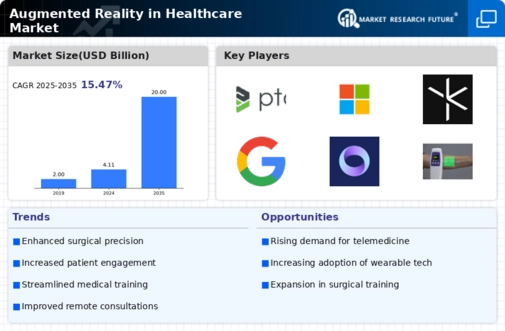
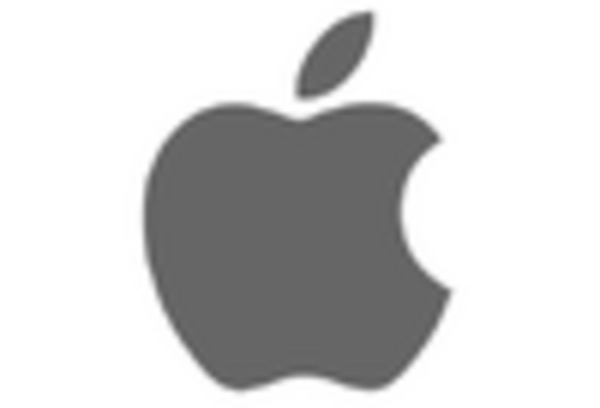
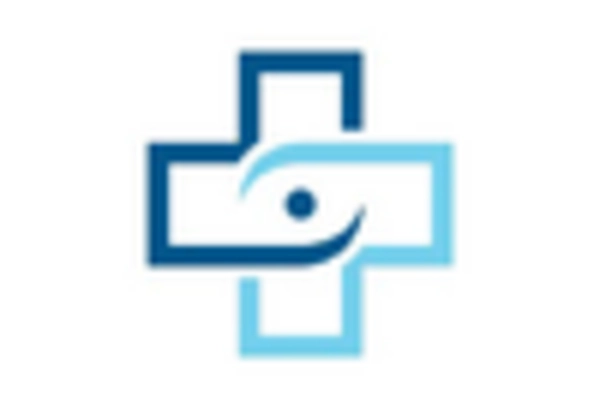

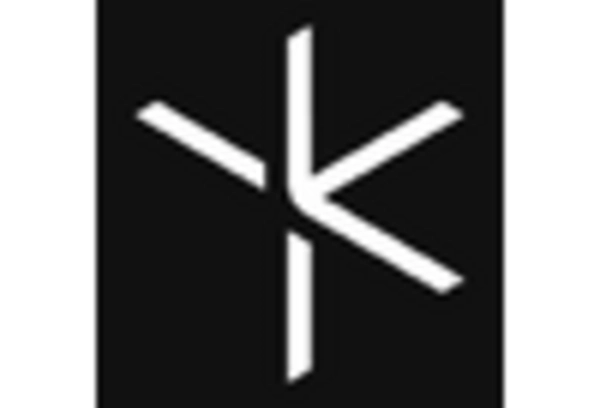

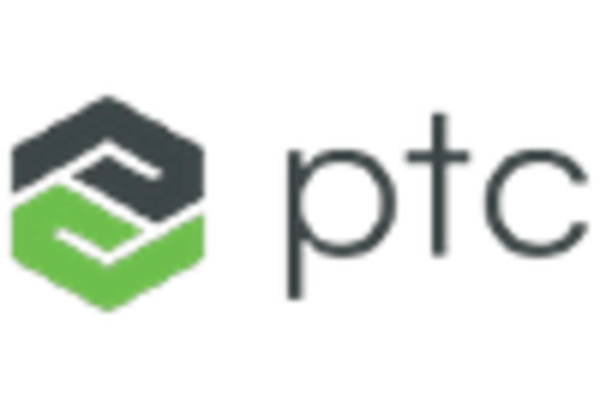









Leave a Comment